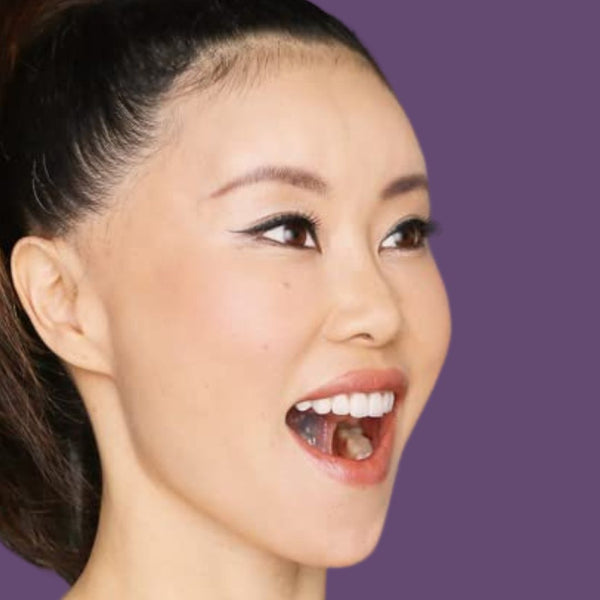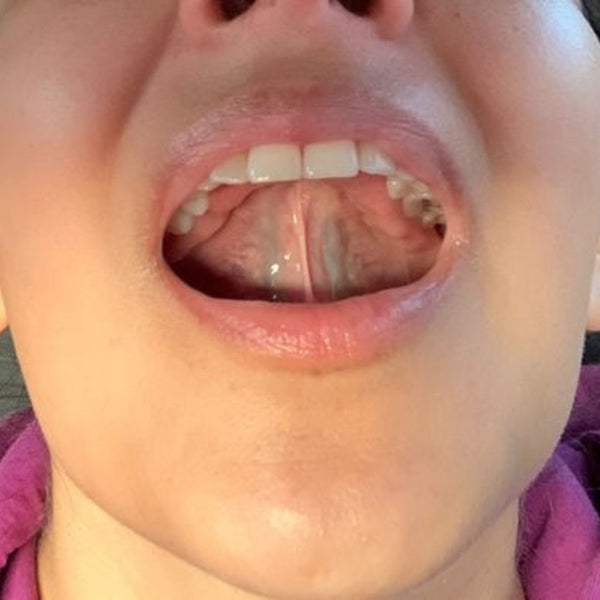
Everyone wants a better facial structure or younger-looking skin. This is why many resort to a long list of skincare routines, make-up, or even face procedures. However, did you know that a small part of the face, such as the tongue, can significantly change and improve the whole face?
The tongue, a muscular organ primarily known for its role in tasting, swallowing, and speaking, is pivotal in facial growth and development. Beyond its basic functions, little did many know that the tongue also influences the shaping of facial structures, particularly during the critical periods of childhood and adolescence. Its resting position and dynamic movements are instrumental in guiding the development of the jaw, teeth alignment, and the overall facial silhouette.
What is Proper Tongue Posture?

When talking about proper tongue posture, which some professionals call “mewing,” face yoga experts point out that the ideal position is at rest, with the tongue gently pressed against the roof of the mouth and the tip just behind the front teeth. Face yoga expert Koko Hayashi explains this means the tongue is up and flat on the palate. Only a few people are aware of the importance of this position, given that it is not usually discussed. However, maintaining a consistent proper tongue posture brings benefits to facial structure, nasal breathing, and balanced aesthetic appearance.
Enhancing Your Smile and Face with the Right Tongue Placement

Carving Out a Strong Jawline
Believe it or not, your tongue does a lot more than just help you enjoy your favorite flavors or allow you to chat with friends. It's actually a secret weapon for sculpting a striking jawline and giving your face that sought-after definition. Resting your tongue against the roof of your mouth is like a natural brace for the upper jaw, encouraging a broad and chiseled maxilla. This simple habit is key to a healthy mouth and a balanced and attractive facial profile. Hayashi points out that the jawline is one of the first things that perk up when you start practicing mewing or good tongue posture. There are plenty of before-and-after shots out there to prove it.
Dental Alignment
Where your tongue hangs out in your mouth can make or break your smile. Keeping your tongue in the right spot means gently nudging your teeth and palate into the perfect alignment as they grow and come in.Hayashi also notes that if you're getting braces or other orthodontic work done, keeping your tongue posture in check is super important. If you don't, you might end up with some unexpected issues down the road, even after your teeth are straightened out.
Tongue Posture and Facial Aesthetics
Good tongue posture isn't just about looking good in the now—it's about ensuring your face develops in the best way possible. It encourages your facial bones to grow in a way that can make your cheekbones pop and give your face a more symmetrical look. It's a subtle thing initially, but the way you hold your tongue can shape your overall facial structure over time.
What Happens to Someone with Poor Tongue Posture?
If your tongue's default position is off—too low in your mouth or pushing against your teeth—it can mess with your facial development in ways that stick around.
Dental Implications: When your tongue's out of place, it can throw your teeth into chaos, causing crowding, gaps, or misalignment. That often means you'll need braces or other treatments to fix things up. Plus, bad tongue posture can lead to TMJ disorders, leaving you with a sore and creaky jaw.
Altered Facial Growth: Over time, poor tongue posture can lead to a less defined jawline, a chin that seems to shrink back, and an overall stretched-out look for your face. This can cause wrinkles and a double chin and might even affect how you feel about yourself and interact with others.

Frequently Asked Questions on Tongue Posture
At what age is tongue posture most important for facial development?
Tongue posture is crucial from infancy through childhood for proper facial development. The development of a child's face and jaw is critical for proper airway development, facial profile, TMJ health, and the position and alignment of teeth. Proper oral resting tongue posture is very important as the tongue provides internal support and guidance for upper jaw development, which in turn helps guide the overall facial development. Early preventive and interceptive treatment facilitates growth in a favorable direction.
Can adults benefit from correcting their tongue posture?
Yes, adults can benefit from correcting their tongue posture. The idea behind tongue posture or orthotropic treatment suggests that oral and facial developmental issues can be corrected in adults. The skull sutures surrounding the maxilla, the upper jaw bone, don’t fuse until one’s late 60s or early 70s. This flexibility means that both upper and lower jaws can move forward or backward simply by maintaining correct tongue posture, even in adults.
How can I tell if my child has a tongue tie?
Look for signs such as a heart-shaped tongue, a short tongue, difficulty lifting or sticking out the tongue, or if the tongue appears misshapen or very short when they try to lift or move their tongue forward. Additionally, if you can see an obvious string attaching near the top of the tongue when asking your child to lift their tongue, there is very likely a restriction that could affect your child.
Does tongue posture change your face significantly?
Yes, tongue posture can significantly affect the overall appearance of the face. Poor tongue posture can pull the bones of your face down, impacting bone alignment and, thus, facial appearance. On the other hand, proper tongue posture leads to a more attractive face with higher cheekbones and a stronger jawline because the muscles in the face and jaw function properly. The tongue's position can influence facial symmetry, the prominence of cheekbones, and the overall facial structure.
How long does it take to see results from myofunctional therapy?
The duration to see results can vary depending on the individual's specific conditions and the consistency of practice. Some patients report improvements in symptoms such as speech, feeding, and sleep within weeks to months of starting therapy. However, for significant changes in facial structure or to correct long-standing habits, it may take longer, potentially a year or more, to see noticeable results. Having realistic expectations and understanding that myofunctional therapy requires consistent effort over time is important.
Wrapping Up: Practice Makes Perfect
Hayashi understands that daily mindful tongue posture is an unusual task that takes a lot of practice and reminding to master. As such, the face yoga expert believes in incorporating it into daily life and discussing it more. Such will normalize the practice to a universally accepted way of improving facial structure and overall health. Having on-the-go guides like the Koko Facial Yoga Exercises app on iOS is also helpful. This tool provides users with immediate and hassle-free access to tongue posture exercises alongside other valuable techniques, enabling consistent practice at one's leisure. Practicing proper tongue posture may initially seem odd. Yet, as individuals push past this initial unfamiliarity, they will see the benefits of improving their facial structure without the pain of surgery and any other traditional methods.

